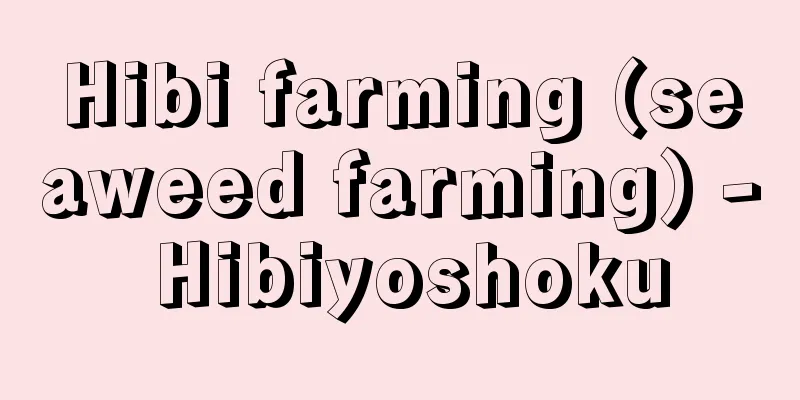Hibi farming (seaweed farming) - Hibiyoshoku

|
A method of cultivating seaweed and oysters. Also known as hibi-ken cultivation. Bamboo, soda (thin tree branches), nets, blinds, etc. are set up in shallow waters, and seaweed spores and oyster larvae are attached and allowed to grow. These underwater structures are called hibi, but were originally intended for catching fish. It is said that seaweed farming began in the early Edo period when fishermen living near Omori in Tokyo Bay noticed that seaweed would grow in the hibi they had built to catch fish, and began building bamboo hibi and soda hibi for the purpose of cultivating seaweed. Source: Heibonsha World Encyclopedia, 2nd Edition Information |
|
ノリおよびカキの養殖方法の一つ。ひび建式養殖ともいう。竹,そだ(細い木の枝),網,すだれなどを浅海に設置し,ノリの胞子やカキの幼生を付着させ,成長させる。海中に設けたこのような施設をひびというが,本来は魚を捕るための施設であった。 江戸時代の初期,東京湾の大森付近の漁民が,魚を捕るために建てたひびにノリがつくことに着目し,ノリを育てる目的で竹ひびやそだひびを建て込むようになったのがノリ養殖の始まりといわれている。
出典 株式会社平凡社世界大百科事典 第2版について 情報 |
Recommend
Rihei Kawamura
…Although it was one of the three major cotton tr...
Repertory system
A theatrical term. It refers to a performance styl...
Lake Shoji
Located in Fujikawaguchiko-machi, Minamitsuru-gun...
samsinhalmŏni (English spelling) samsinhalmoni
…In addition to the Uchigami, who are worshipped ...
Gassan Castle
A mountain castle built on Mt. Gassan in Hirose, Y...
Catabolism - Squid
Assimilation is the process by which organisms br...
Escape - Chosan
A form of peasant struggle in the Middle Ages, in...
Canabun - Kanabun
It is an insect belonging to the subfamily Cetoni...
epitte (English spelling)
...A document in which the intended purpose is wr...
Martin Andersen Nexφ
1869‐1954 Danish author. Also known as Anersen Nex...
Arthur Seyss-Inquart
1892‐1946 Austrian politician. Born in Moravia. Wh...
thāt (English spelling) that
...However, unlike musical scales, Melakarta is n...
Internal combustion engine
A type of heat engine that burns fuel in a gas (m...
Nikko [city] - Nikko
A city in the northwest of Tochigi Prefecture. It ...
Hokkokuji - Hokkokuji
Roads heading to Hokuriku or roads in Hokuriku. C...









